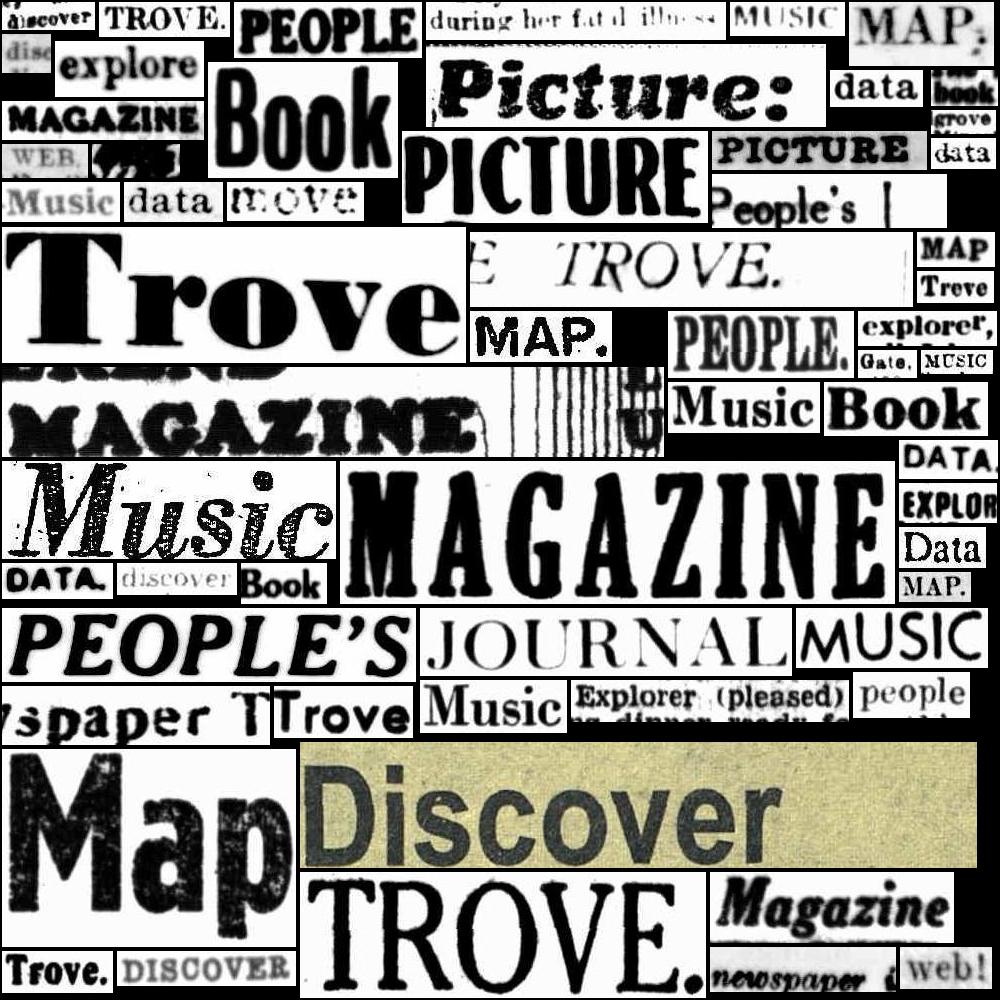26. Research pathways#
The Trove Data Guide provides lots of information to help researchers access and understand the data that’s available through Trove. But once you’ve found some interesting data, how do you package it for further analysis? How do you connect your Trove discoveries with available digital tools to pursue specific research questions?
This section highlights pathways that connect Trove data to a range of digital tools. They’re examples of what’s possible – intended to spark new ideas and approaches, not to privilege particular methodologies. Use them as a starting point in planning your own projects.
- Using text
Trove includes text extracted from digitised publications using OCR, text in born digital publications and website, and text in user added annotations.
- Using images
Trove includes millions of digital images. Most of these are digitised pages from books, newspapers, and periodicals, but there are also thousands of digitised photographs, pieces of ephemera, art works, and manuscripts.
- Collection and system data
Trove includes vast quantities of metadata describing its digitised and aggregated collections. But there’s also structured data generated by the processing of resources, Trove’s search indexing, and the activities of Trove users.
- Maps and places
Trove includes a large collection of digitised maps. There’s also some spatial information included in metadata records.
- Creating collections
Through your own research you’re likely to create collections of resources from Trove. This section provides information on managing, sharing, and reusing those collections.
